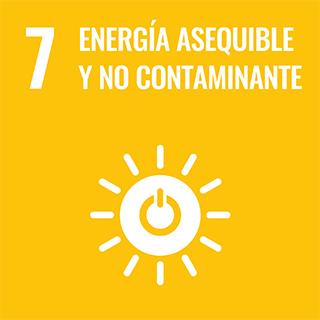
Indexed in
License and use
Impact on the Sustainable Development Goals (SDGs)

Analysis of institutional authors
Prado Rujas IAuthorCalculating Heavy-Duty truck energy and fuel consumption using correlation formulas derived from vecto simulations
Publicated to:Sae Technical Papers. 2019-April (April): - 2019-04-02 2019-April(April), DOI: 10.4271/2019-01-1278
Authors: Tansini A; Fontaras G; Ciuffo B; Millo F; Prado Rujas I; Zacharof N
Affiliations
Abstract
The Vehicle Energy Consumption calculation Tool (VECTO) is used in Europe for calculating standardised energy consumption and CO2 emissions from Heavy-Duty Trucks (HDTs) for certification purposes. The tool requires detailed vehicle technical specifications and a series of component efficiency maps, which are difficult to retrieve for those that are outside of the manufacturing industry. In the context of quantifying HDT CO2 emissions, the Joint Research Centre (JRC) of the European Commission received VECTO simulation data of the 2016 vehicle fleet from the vehicle manufacturers. In previous work, this simulation data has been normalised to compensate for differences and issues in the quality of the input data used to run the simulations. This work, which is a continuation of the previous exercise, focuses on the deeper meaning of the data received to understand the factors contributing to energy and fuel consumption. Fuel efficiency distributions and energy breakdown figures were derived from the data and are presented in this work. Correlation formulas were produced to calculate the energy loss contributions of individual components and resistances (air drag, rolling resistance, axle losses, gearbox losses, etc.) over the Regional Delivery and Long Haul cycles, given a limited number of input parameters such as vehicle characteristics and average component efficiencies. Default values and meaningful ranges of variation of these parameters obtained from the data of the fleet are also reported in this work. The importance of air drag and rolling resistance losses are highlighted since these losses account for about 70% of the energy consumed downstream the engine. Finally, based on the correlation formulas to calculate the individual energy losses, a method is presented that calculates the final energy consumption and CO2 emissions for all the regulated HDTs classes and that does not rely on the use of VECTO.
Keywords
Quality index
Bibliometric impact. Analysis of the contribution and dissemination channel
The work has been published in the journal Sae Technical Papers due to its progression and the good impact it has achieved in recent years, according to the agency Scopus (SJR), it has become a reference in its field. In the year of publication of the work, 2019, it was in position , thus managing to position itself as a Q2 (Segundo Cuartil), in the category Safety, Risk, Reliability and Quality.
From a relative perspective, and based on the normalized impact indicator calculated from the Field Citation Ratio (FCR) of the Dimensions source, it yields a value of: 1.9, which indicates that, compared to works in the same discipline and in the same year of publication, it ranks as a work cited above average. (source consulted: Dimensions Aug 2025)
Specifically, and according to different indexing agencies, this work has accumulated citations as of 2025-08-17, the following number of citations:
- Scopus: 9
- Open Alex: 11
